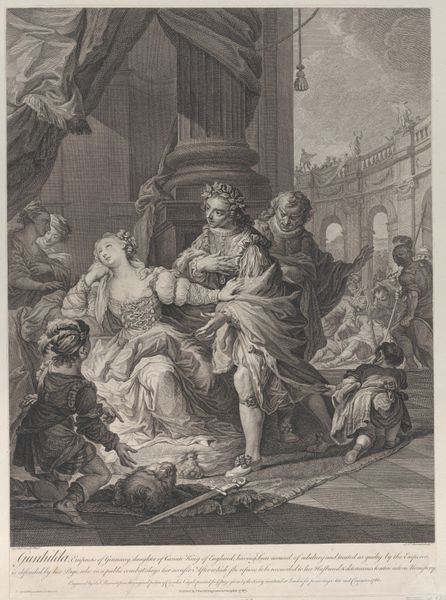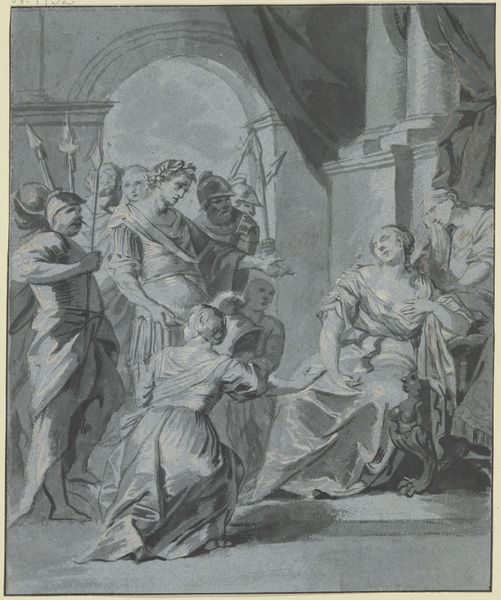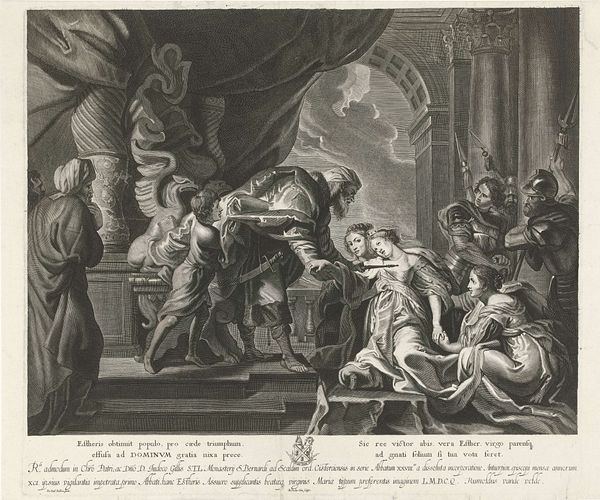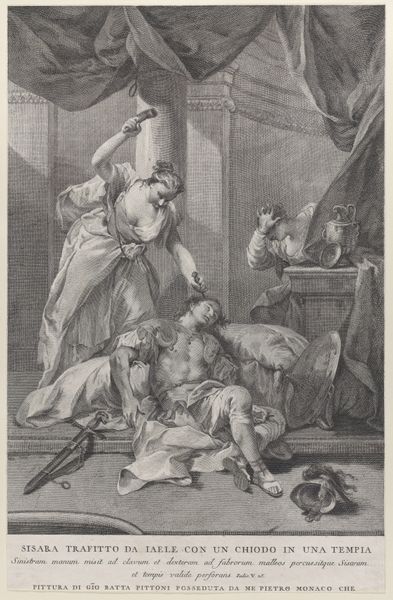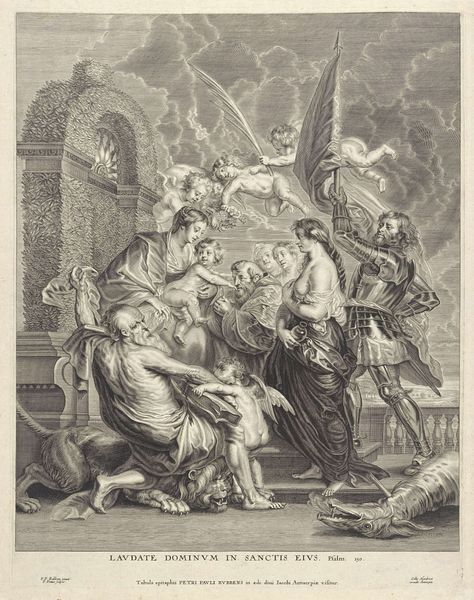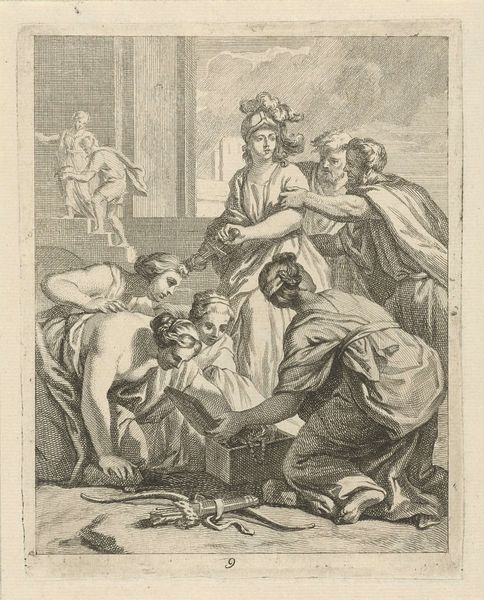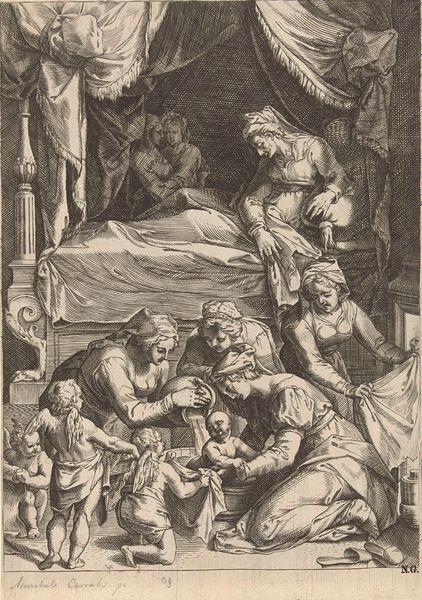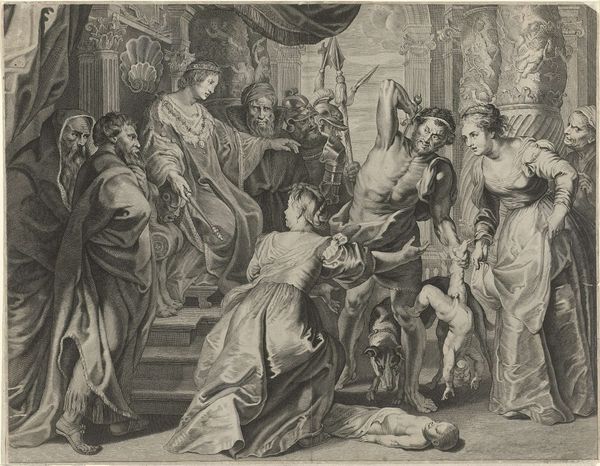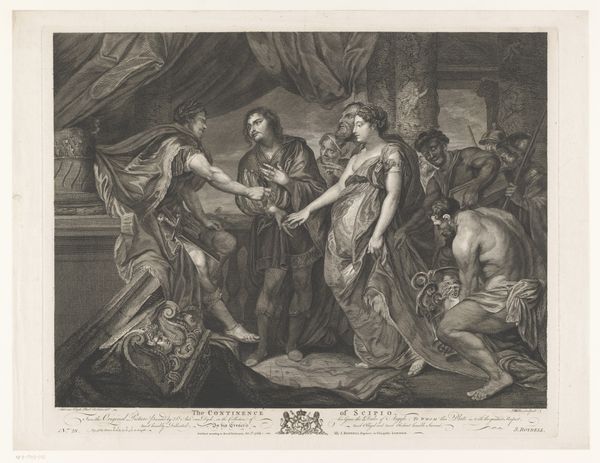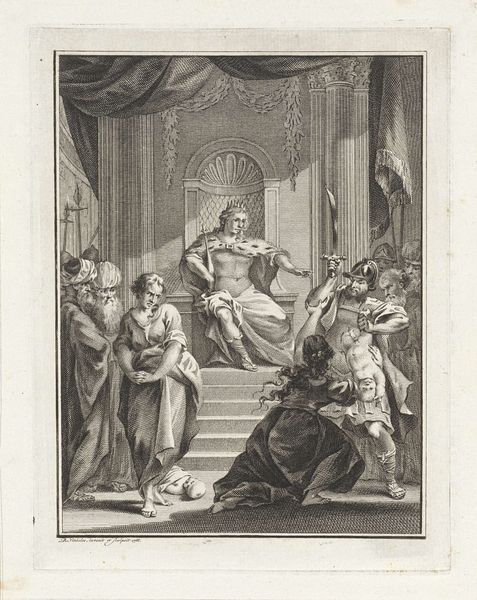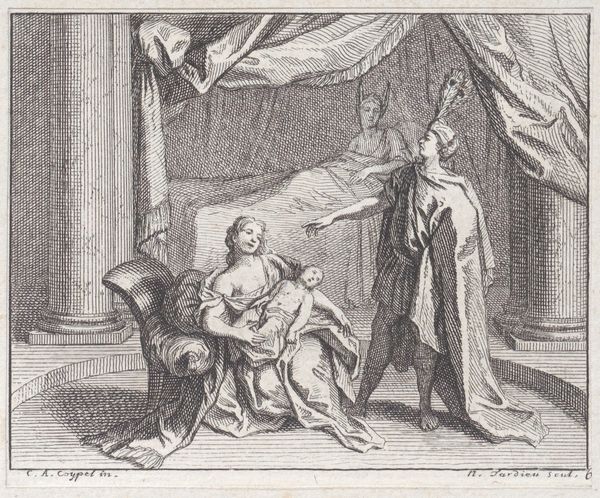
Lucretia deploring her misfortune to her husband Collatinus, her father, Publius Valerius, and Junius Brutus 1763
0:00
0:00
Dimensions: Sheet (Trimmed): 19 5/8 × 14 3/8 in. (49.8 × 36.5 cm)
Copyright: Public Domain
Editor: Here we have Simon Francis Ravenet the elder's 1763 engraving, "Lucretia deploring her misfortune to her husband Collatinus, her father, Publius Valerius, and Junius Brutus.” It’s quite a dramatic scene, rendered with incredibly fine lines. The stark contrast between light and shadow really amplifies the tragic mood. I'm struck by how everyone seems frozen in their grief. What visual cues strike you most powerfully? Curator: Indeed, the frozen postures are quite telling. Consider the helmeted figures— symbols of Roman military power. But their downward gaze suggests shame, defeat, and a turning away from rigid martial values toward empathy. And Lucretia, bathed in light, becomes a potent emblem, a visual anchor connecting personal violation with the future republic's ideals. Do you think this scene conveys something beyond personal tragedy? Editor: Definitely. Her suffering seems to be the catalyst for something bigger, perhaps even a kind of cultural reckoning. But what is she, as a central figure, meant to symbolize? Curator: Lucretia is, in this context, an allegorical figure—an icon of virtue violated. The symbolic weight of her suffering served as a potent rallying cry. The tragedy is a deliberate representation of moral outrage translated to revolutionary action. She becomes a lasting, visual embodiment of feminine virtue and male power abused. Think of her as an archetype, revisited and reinterpreted throughout art history to address enduring concerns about honor, justice, and the subjugation of women. What, for you, is the resonance today? Editor: It’s unsettling to think about how certain images and their underlying themes continue to reappear across centuries, forcing us to confront uncomfortable truths about societal structures. This makes me think about contemporary discussions surrounding victimhood. Curator: Precisely! Ravenet, perhaps unwittingly, tapped into the enduring power of visual symbols to stir profound emotions and to carry complex cultural narratives across time. We recognize patterns, repeat them. Images hold cultural memory, prompting renewed discourse about power and ethics.
Comments
No comments
Be the first to comment and join the conversation on the ultimate creative platform.
